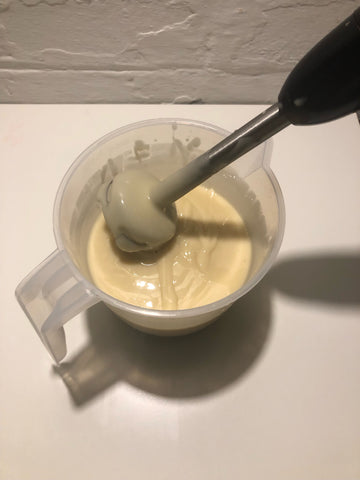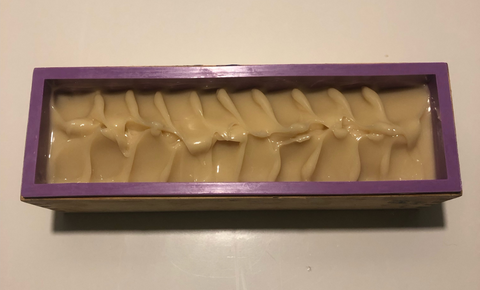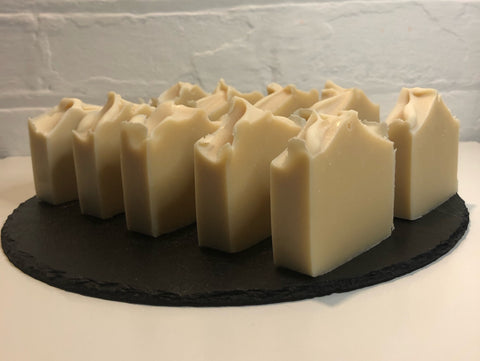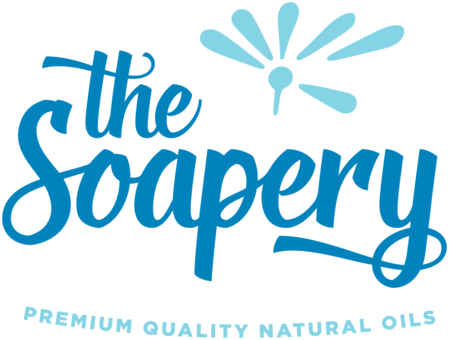Goats Milk Soap Recipe

If Cleopatra bathed in milk to keep herself beautiful then it’s good enough for us! For thousands of years milk soaps have been incredibly popular.
They feel luxurious on your skin and are bursting with moisturising properties from the fat content of the goats milk as well as being packed full of fatty acids, nutrients and glycerine.
Why make goat milk soap?
Goat milk soap is an absolute classic. It is widely used by people with sensitive skin, and many people report that it helps their eczema.
To help keep the goat milk soap as gentle as possible we haven't added any essential oils. Some essential oils can often be the cause of irritation for people with sensitive skin.
However, if you would like to add essential oils then we'd recommend adding using around 25g in this recipe.
How to use goats milk for soap making
Usually, cold process soap recipes are made up of water, oils and sodium hydroxide. However, when you're making goat milk soap you replace the water with goats milk.
The more goat milk you use the creamier your bar. For our goats milk soap recipe we have gone for 100% water replacement for extra luxury!
We're using powdered goat milk in this recipe because it is much easier to handle than fresh goat milk. You can add it directly to the melted oils, rather than having to freeze it into cubes.
Read on to find out how to make goat milk soap...
Ingredients:
This goats milk soap recipe will make 6 x 100g bars.
- Olive oil pomace 360g | 395ml
- Coconut oil refined 224g
- Shea butter refined 160g
- Castor oil 56g | 58ml
- Water 212g
- Sodium hydroxide 111g
- Goats milk powder 28g
Equipment:
- Gloves
- Goggles
- Digital scales
- Digital thermometer
- Stick blender
- Silicone soap mould or DIY alternative
- Silicone spatula
- Heatproof bowl
- Plastic measuring jugs, ideally 2x 1L and 1x 2L
Safety Note: Cold process soap making involves handling sodium hydroxide. You must wear gloves and goggles at all times. It is a caustic product and will burn.
In the event of getting it on your skin, rinse well with plenty of plain water. If it is splashed in the eyes, wash with water and seek urgent medical attention. Keep away from pets and children at all times.
Method:

1. Make the sodium hydroxide solution
- Put your gloves and goggles on.
- Open the window, the fumes will be unpleasant.
- Weigh the water.
- Weigh the sodium hydroxide.
- Add the sodium hydroxide to the water, not the other way around.
- Mix well until combined.
- Leave to cool down, it will be hot.

2. Weigh and heat the oils
- Weigh the olive oil, coconut oil, shea butter and castor oil
- Heat over a pan of boiling water, or using short bursts in the microwave
- Mix well until combined
- Remove from the heat and allow to cool

3. Check the temperatures
- Test the temperature of your melted oils, they should be between 35C and 40C.
- Reheat them or leave them to cool more if necessary
- Test the temperature of the sodium hydroxide solution, it should be between 25C and 40C.
- Leave to cool if necessary, but don't reheat if it's too cool. Just heat the oils a little more to compensate.
- When the temperatures are right, blend the powdered goat milk into your oil mixture.
- Add the sodium hydroxide solution to the oil mixture

4. Blend until trace
- Mix with the stick blender and blend with short bursts.
- Watch for the mixture starting to thicken.
- Test for trace by dripping soap batter on the surface of the mixture. If the drips sit on the surface then your mixture has reached trace.
- Stop blending when the soap batter has reached a light trace

5. Pour into moulds
- Pour the soap mixture into moulds
- Tap the mould to get rid of air bubbles
- Leave somewhere cool for 48 hours before unmoulding.
- Don't insulate the soap while it's curing, you don't want it getting too hot.

6. Unmould and cure
- Take your soap out from the mould
- Put the bars with gaps in between them, and leave to cure for 4-6 weeks.
Continue reading
Now you've tried making goat's milk soap, why not continue learning?
- Interested in more cold process soap recipes? Try our honey soap recipe
- Want to learn more about essential oils? See our guide to essential oils for soap making.
- Would you like to make goat milk soap but you'd like an easier recipe? Try our goats milk melt and pour soap recipe
Did you try our goat milk soap recipe? Comment below and let us know how it came out.

